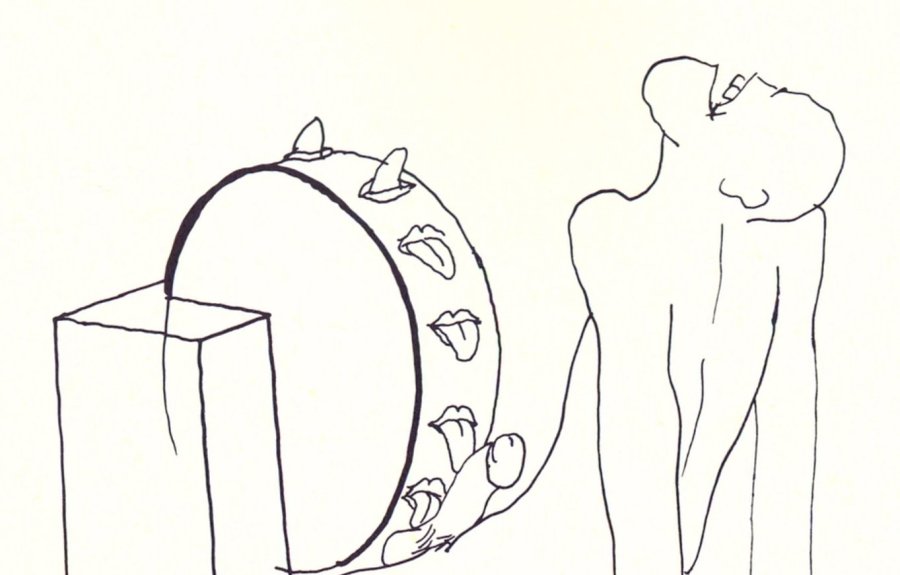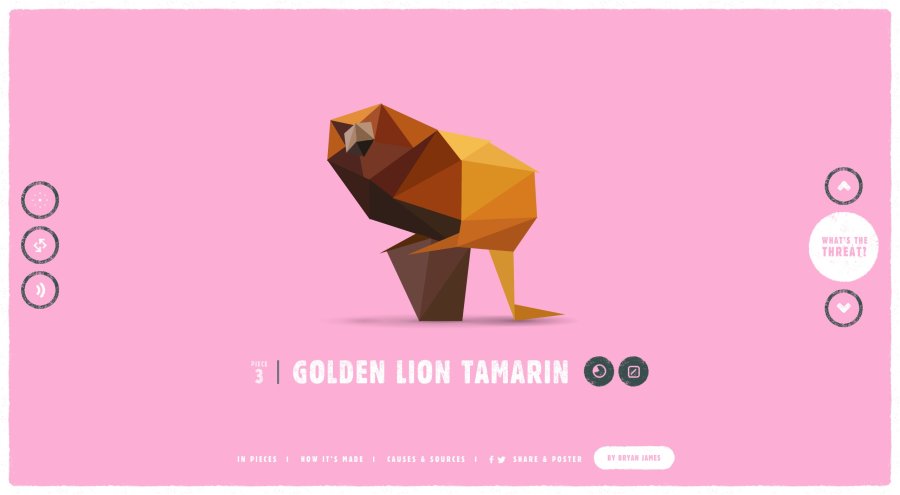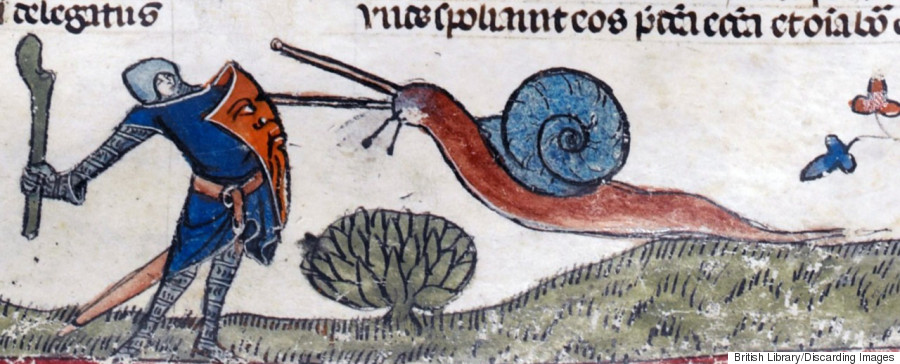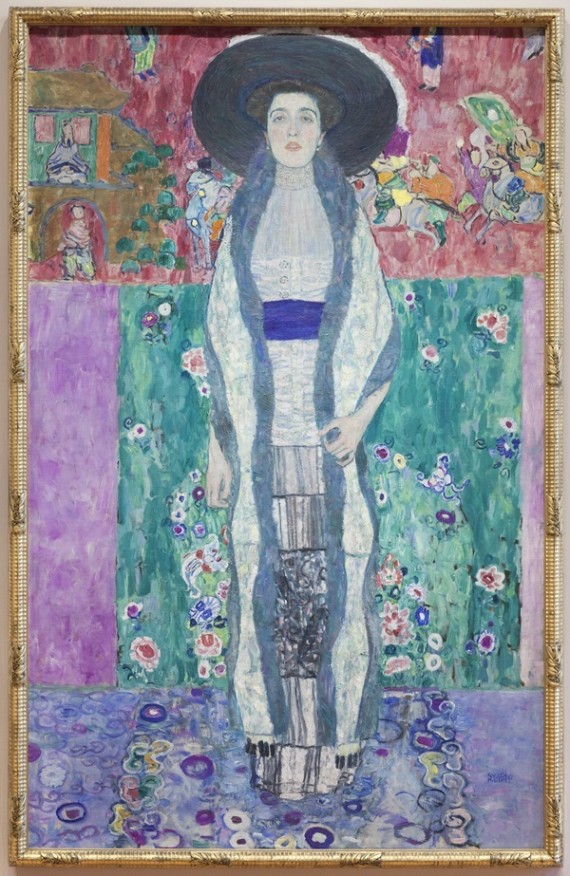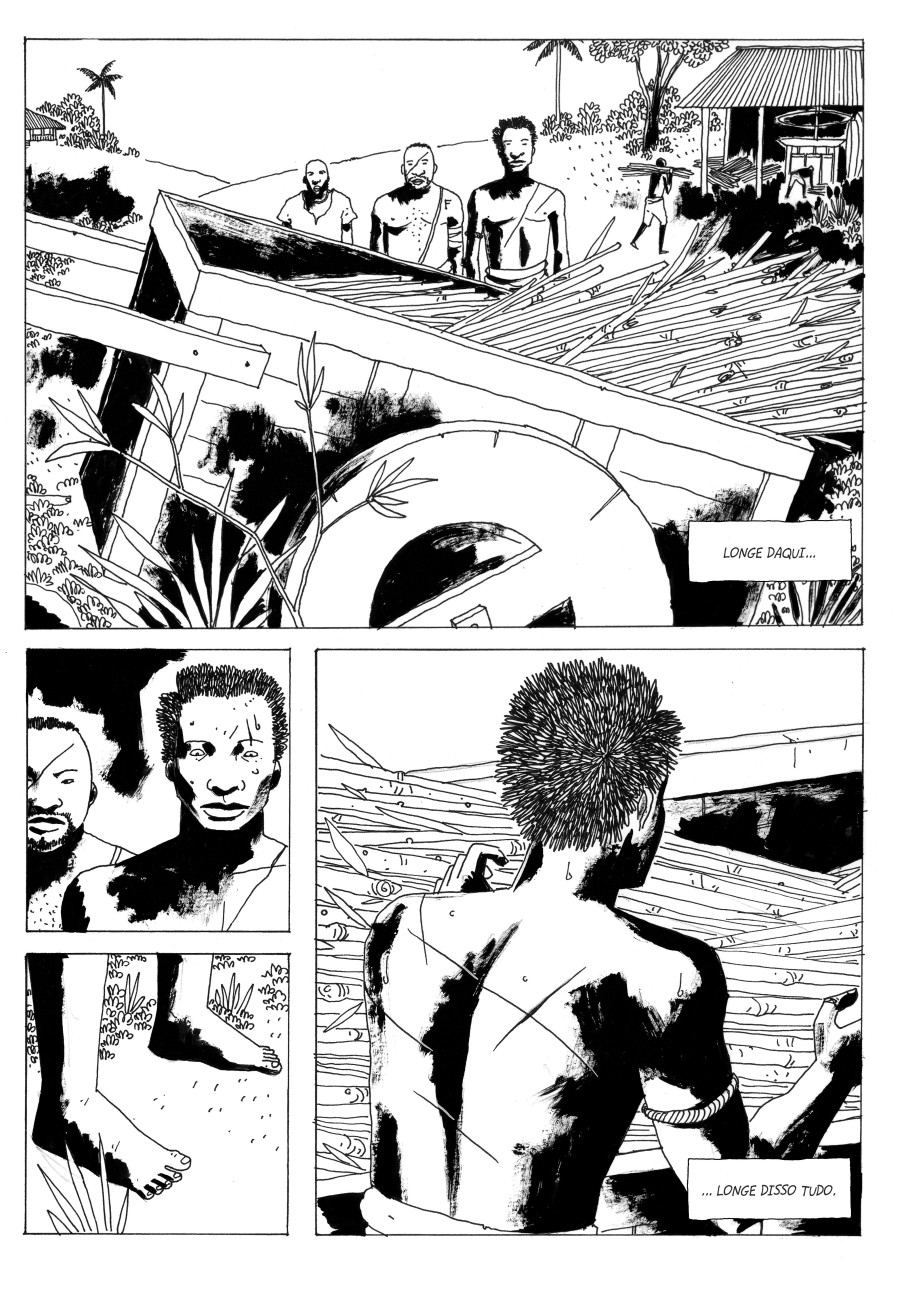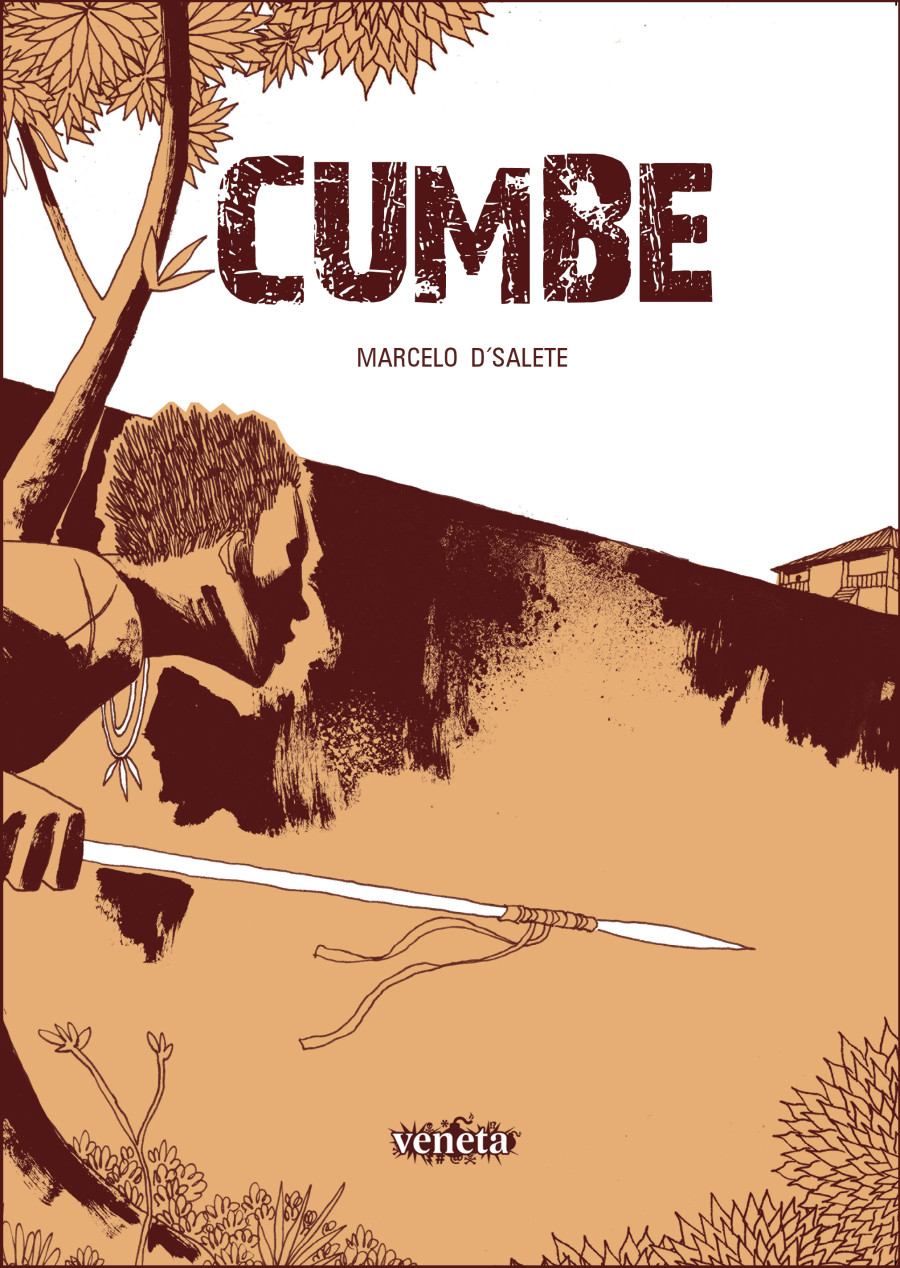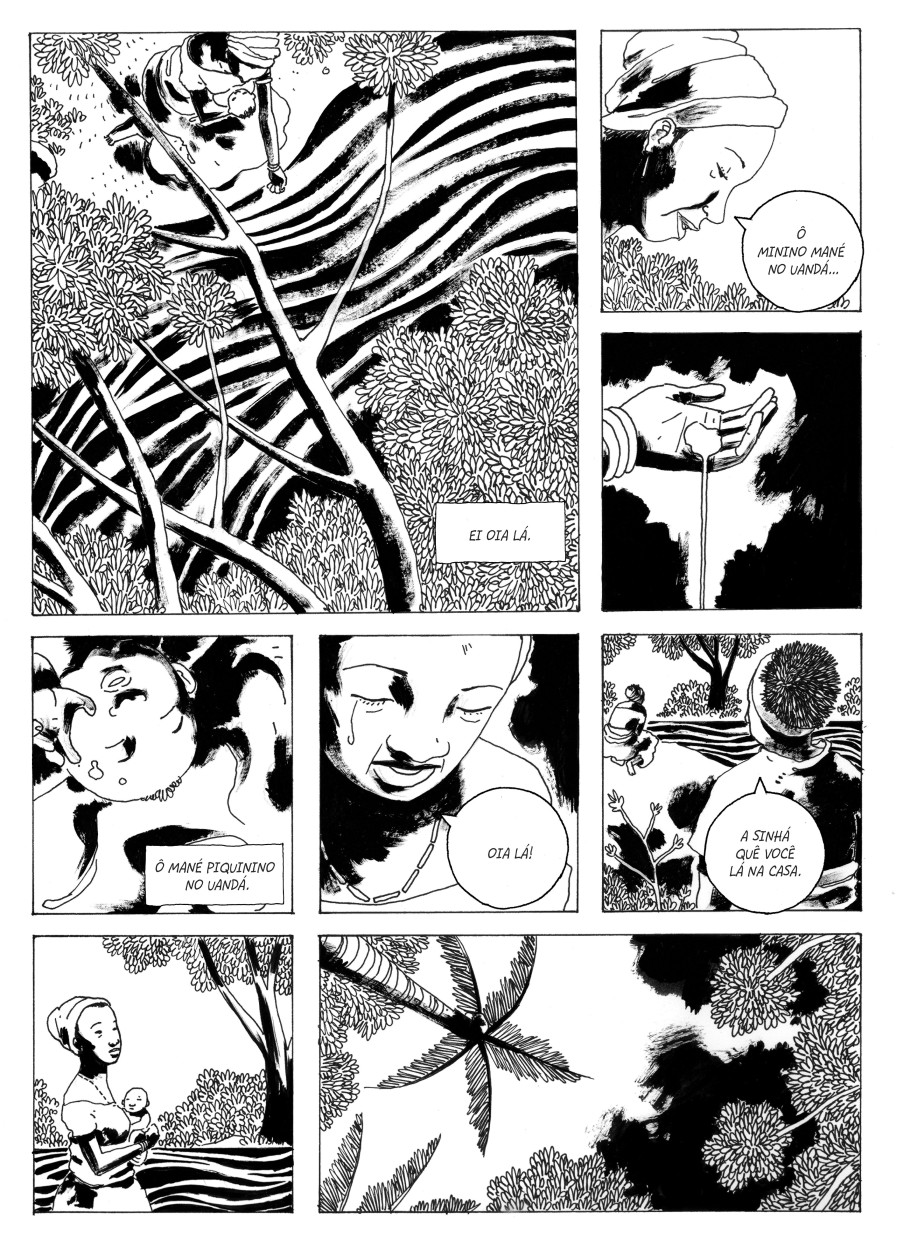Tomi Ungerer was, for a brief reign, the king of children's illustration.
After moving to New York in 1956, the French artist and writer published a succession of unusual yet wildly successful children's books, including "The Three Robbers," about a trio of winsome burglars, and "Crictor," about a rather unlikely protagonist -- a lovable snake. From the start, Ungerer held a special place in his heart for the outsider, the underdog, the weirdo, the trickster. This unusual vantage point, along a ravenous imagination and wicked dark side, set Ungerer apart from the traditional "happily ever after" children's book originator.
Much of Ungerer's unorthodox style stemmed from his upbringing under Nazi occupation in Alsace, France, where he was constantly straddling French and German languages and identities, ultimately feeling as though he belonged nowhere. Faced with constant fear and a looming sense of abnormality, Ungerer developed a particularly macabre manner of storytelling, treating children with the respect and responsibility he so firmly believes they deserve.
![tomi]()
Aside from his children's book career, Ungerer was known for his punchy protest posters, encapsulating issues related to the Vietnam War and segregation in the South with hard-hitting imagery that didn't easily fade from memory. He also had a penchant for NSFW artworks, crafting sadomasochistic erotica that would make many an adult, let alone a youngin, blush. These sexually fantastic renderings were eventually what got Ungerer blacklisted by some corners of the kids lit world. While other artists like Maurice Sendak, a friend and disciple of Ungerer's, continued to gain notoriety in America, Ungerer's books were later banned in libraries across the country, casualties of
cultural wars. He eventually left the United States in a state of quasi professional exile, moving to Nova Scotia with his wife before settling permanently in Cork, Ireland in the 1970s.
Although many were shocked and turned off by Ungerer's simultaneous pursuits in the realms of both childish and very adult fantasy, his ideology throughout has remained constant. Constantly devoted to exploring fanciful visions of all kinds, from treasure diving pigs to fornicating frogs, Ungerer fully embraces the joyful cluster of ups and downs that constitute life. No matter his subject matter or his audience, Ungerer creates fearlessly, always asking in the process,
why not?
Over the past twenty years, Ungerer has finally received the recognition he's so long deserved. In 1998, he was awarded the Hans Christian Andersen Award, the highest honor of the children's literature realm. In 2013, a documentary titled "Far Out Isn’t Far Enough" was released, presenting a complex and compassionate view of Ungerer's turbulent life and jubilant spirit. In 2015, an exhibition of his work, called "
Tomi Ungerer: All in One" went on view at New York's Drawing Center, hanging his erotic depictions alongside his children's images for the first time.
In honor of Ungerer's doc going live on
SundanceNow Doc Club as part of their "
Masters of Their Craft" programming, we reached out to the 83-year-old legend to learn more about his rousing life and intrepid imagination. Ungerer speckled the conversation with anecdotes and jokes, combining the generous wisdom of an elder with the giddiness of a child. "I'm in France and I'm the youngest person here, you can't imagine," he said in his introductions. "It's absolutely hilarious. A lady told me 'I lost my husband in the war.' I asked her which war and she couldn't remember!'"
It's not hard to see why he remains one of the most indefatigable lights in the worlds of art and literature.
![tomi]() Is it difficult at all for you to get to a place where you can identify with the imagination of a child?
Is it difficult at all for you to get to a place where you can identify with the imagination of a child?
Look here, generally speaking, I have been pretty childish myself. I sometimes wander in a state of delayed development, in a way. I think it is very important to keep your innocence. Just to try to remember how it was when you were a child, when everything you learned was perfectly new to you. Each time I take an airplane, I feel like a child taking his first flight, wondering how all these tons of metal go up into the air. Here is a piece of advice: one should be very careful to keep some kind of innocence in oneself. It keeps your life really fresh and blooming. Because the more we accumulate in knowledge we get bogged in it.
A bit of naivety doesn't hurt from time to time. I think it keeps me going. Everything feels to be always new again. It's refreshing. This may be why I feel so comfortable with children. I never talk down to children. I always talk to children as equals. I can learn as much from children, sometimes even more, than I can from adults. Children have a way of looking at things.
![mo]() What was your own childhood like?
What was your own childhood like?
My father died when I was three and a half years old. My brother was eight years older than I am and he basically replaced my father. It was very difficult for him psychologically. He had some good tricks with me; he would always put signs above my bed saying things like "be tenacious." These messages stuck with me for the rest of my life.
I was very lucky to have older brothers and sisters. They taught me to eat, they taught me to draw. They took me camping. I was really spoiled because everybody took it upon themselves to bring me up. We had a very tight family life. Everything was shared: the love of nature, hiking, gardening. We had no money so we just lived by what we grew. The only drawback was that they teased me a lot. The enjoyed driving me crazy. They would scream at me, like a choir, going, "You're not me! You're not me!" and I would just lose it. But I think that was good too. It's good to dive into life knowing things are not that easy. Now, in terms of teasing, I can really take it. I'm quite devilish when it comes to that.
![three]() And before he passed away, your father was an artist, correct? Did that shape your desire to create art?
And before he passed away, your father was an artist, correct? Did that shape your desire to create art?
My father was everything. My father was a wonderful writer, published in French, German and even Alsatian. And then he took over the family business of making astronomical clocks, so he was an astronomer. And he was quite a remarkable artist. I discovered it all much later on, in boxes, all his sketchbooks, drawings and paintings. He had just about every possible talent that one could imagine.
However, he was something of a tyrant, and I don't know how well I would have gotten along with him if he had stayed alive. Every morning my brother and sister had to line up for inspection. But, would you like to know something beautiful? Before he finally died, his last words to my mother, who was called Alice, were: "Alice, come walk with me in this beautiful garden."
![party]() What was your mother like?
What was your mother like?
My mother too had a great talent for writing in a very outrageous way. Both she and father wrote poetry fluently, absolutely fluently. She was a great fan of President Nixon and wrote a lot of fan letters to him. They started: "proud and gallant knight." She used to write hate letters to the Pope. She considered the Pope the antichrist.
My grandmother, though, was a really mean person. Whenever I was in the garden, she would look out through the window, and she would press her face against the glass just to terrify me.
![tomi]() In your documentary you use a lot of sexualized language to talk about art making, saying you "raped" the white paper and that a masterpiece "impregnated" you. Do you see art making in itself as an erotic act?
In your documentary you use a lot of sexualized language to talk about art making, saying you "raped" the white paper and that a masterpiece "impregnated" you. Do you see art making in itself as an erotic act?
I think eroticism is the life of the brain. Eroticism is doing an animal act. It is shaping things up and putting them on a stage, in a way. In the olden days, I would always ask:
What are your sexual fantasies? And then,
Let's play them out! Why be embarrassed about it?
I think people should be allowed to do anything they want as long as they don't hurt anyone. As long as they're doing it with mutual consent. It's a form of freedom and I think freedom should be available to everyone. I'm very open minded when it comes to that. One has to respect other people's fantasies, or phantasms.
![tomi]() Do you see a connection between your children's stories and erotic stories, seeing as both cater to fantasy?
Do you see a connection between your children's stories and erotic stories, seeing as both cater to fantasy?
No. I've always been very careful about that. My one problem with doing erotic books was I would not have wanted them to fall into children's hands. It comes back to the subject of innocence. You have to wait for the right time for the right subject. You may call me puritanical, I've been brought up by the Bible and I am Protestant and all that. I do respect it. Everything in its time.
If a child were to know everything, it would become run of the mill. There would be no discovery. It would be the end of discovery. It would be the end of eroticism! Eroticism is a safari, you know what I mean? Children should find out later in life and have their own adventure.
I do believe children should be taught what sex is and how children come about. Of course, if a child grows up on the farm and they see the horses and the pigs doing it, they'll know someday they'll grow up and do the same thing. But it is something that can be talked about in a very simple and direct way. When a child asks a question one should never evade an answer and never lie. Children have the right to truthful answers to their questions. This is a very basic right.
![unger]() With your Protestant upbringing, was the sexual revolution somewhat of a shock to you?
With your Protestant upbringing, was the sexual revolution somewhat of a shock to you?
When I was in America in the '60s there were all those books about sex, about how to do it. So I made fun of it. I made a book that was the
Kama Sutra with frogs. I put them in every possible situation and position, believe me! I used frogs because I always thought that frogs have beautiful legs. My mother loved practical jokes and you know what she did one day? She sent me to the grocery shop and sent me over to the lady who worked there to ask if she had frog legs. She thought I was talking about her and she nearly slapped me! I came home crying.
![poster]() Let's talk about your protest posters. You've attributed their style to Hitler's aesthetic. Is it ever difficult to separate form from content in situations like this?
Let's talk about your protest posters. You've attributed their style to Hitler's aesthetic. Is it ever difficult to separate form from content in situations like this?
I have done political posters all my life. I've done posters for AIDS, for cancer, against the war, for everything. For four years we were under the Nazi rule as a child, and I remember when I saw the first Nazi poster I was struck by the strength of it. I used fascism as a recipe, in a way. This is the best way to fight your enemy. If your enemy has a better propaganda than you have, use his way of doing propaganda. Some things like fascism, like violence, like injustice, must be fought. It's my duty.
![sheep]() Do your dreams ever contribute to your artworks?
Do your dreams ever contribute to your artworks?
I have a lot of nightmares, I really suffer from that. It goes back to the war and fear of being arrested. My dreams are mostly paranoid about persecution. I don't think you can get rid of them. But I use my dreams in my work. And I have my tricks too. When I wake up in the morning I tell myself -- you just went through a horror movie! And who was the main actor in this horror movie? You! So, there are always tricks for everything.
![tomi]() How have you seen the field of illustration change throughout your life?
How have you seen the field of illustration change throughout your life?
Well, there is no market for illustration anymore. I came to America in the glorious '60s. All the magazines were publishing stories and using illustrators and then what happened? Television came. And the advertising money went to television and didn't go to the magazines anymore. Nowadays photography has taken over. It is, in a way, regrettable, because really illustration has an outlet in books. At least we still have children's books.
![tomi ungerer]() Do you make an effort to reach out to or mentor younger artists?
Do you make an effort to reach out to or mentor younger artists?
A lot of young artists come to me and I always treat them very well. The hardest most difficult thing in the world is when a young person comes to me and there is no talent. How am I to tell them? But what joy when I meet somebody with talent! And I must say, I've been very helpful with great results. It feels good, it is so important to give and share in life.
![heb]() Regarding the January attack on Charlie Hebdo, you told the Paris Review: "What happened in Paris was absolutely to be expected, sooner or later." Can you expand on that?
Regarding the January attack on Charlie Hebdo, you told the Paris Review: "What happened in Paris was absolutely to be expected, sooner or later." Can you expand on that?
I know what it feels like to be ostracized because of your actions. After the war, everybody would treat me as a dirty German and all that. We have to respect people for whatever they are. We don't need to respect terrorists. But if you have terrorism or anything like this, it's because there is a great deal of anger. And anger calls for revenge. But to reach that stage of anger there must be so much frustration. That's why we must analyze and recognize that we wouldn't have that if we had treated them more respectfully.
Another thing that really hurt me, that I never could understand -- the Americans came to Europe to liberate us from fascism and racism. And when I went to America, there was segregation in the South. I've never digested that. I'm surprised there is not more anger there; I could understand that anger. The thing with Charlie Hebdo, is I must say, the French have their own way of being racist. And the only way to stop that is to educate children. I'm talking about respect. When you have respect, you can envision world peace.
![tomi]() Is it true you don't have a phone?
Is it true you don't have a phone?
I don't have a portable telephone. I think it would destroy some of my freedom. I'm dyslexic also. If I do numbers I get them all mixed up, so there are many reasons.
Are you weary of our growing dependence on technology?
With most inventions, in the beginning it's great and in the end... Well, listen. I'm happy I have a refrigerator so I can't put it down. But it's all very dangerous to handle. It's like a coin, it has two faces. Everything is double faced.
![van]() You've said in the past you believe in despair, not hope. What do you mean by this?
You've said in the past you believe in despair, not hope. What do you mean by this?
I mean, I believe in doubt. For me, my kind of doubt is an opening of my mind. My doubt means... why not? I'm ready to accept everything. Everything is possible. Every religion can be right, every point of view can be right. So I always say, why not? Even towards the unexplainable. I'm not trying to sell my idea; I'm just talking about myself, my recipe in life. I like to take things the way they are. I think to just hope can even be a form of arrogance. I think, there is a thing in French, "help yourself and God will help you." But you better do it first.







